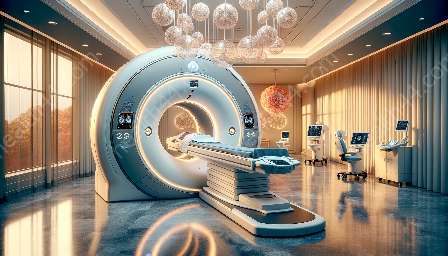Fluoroscopy machines are a critical component of medical imaging devices and equipment, enabling real-time visualization of dynamic processes within the human body. These advanced machines play a crucial role in a wide range of medical procedures and have revolutionized healthcare delivery. In this comprehensive guide, we will explore the technology, applications, benefits, and future prospects of fluoroscopy machines.
Understanding Fluoroscopy Machines
Fluoroscopy is a specialized imaging technique that uses X-rays to obtain real-time moving images of the internal structures of the body. Fluoroscopy machines consist of an X-ray source and a digital detector, which are connected to a monitor for visualization. The machine operates by emitting a continuous X-ray beam that passes through the body, creating a live video feed of the internal anatomy.
Modern fluoroscopy machines are equipped with advanced imaging software and hardware, allowing for high-quality, low-dose radiation imaging. The integration of digital image processing and real-time monitoring capabilities has significantly enhanced the utility and safety of fluoroscopy machines in clinical settings.
Applications in Medical Procedures
Fluoroscopy machines are utilized in a wide range of medical procedures across various specialties, including cardiology, orthopedics, gastroenterology, and interventional radiology. In cardiology, fluoroscopy is employed for visualizing the heart and blood vessels during diagnostic and interventional procedures, such as angiography, stent placement, and electrophysiology studies.
Orthopedic procedures, such as joint injections, arthrography, and spinal interventions, benefit from the real-time guidance provided by fluoroscopy machines, ensuring precision and accuracy in needle placement and treatment delivery. Gastroenterologists use fluoroscopy for imaging the digestive tract, guiding endoscopic procedures, and diagnosing gastrointestinal conditions.
Interventional radiologists rely on fluoroscopy machines for minimally invasive treatments, such as embolization, tumor ablation, and vascular interventions. The dynamic nature of fluoroscopic imaging allows for precise navigation and real-time monitoring of therapeutic interventions, leading to successful patient outcomes.
Advantages of Fluoroscopy Machines
Fluoroscopy machines offer several distinct advantages that contribute to their widespread use in medical settings. Real-time visualization enables healthcare providers to observe dynamic anatomical structures and monitor the progress of procedures, facilitating accurate diagnoses and targeted treatments.
Furthermore, fluoroscopy allows for the guidance of instrument insertion, such as catheters and needles, with high precision, reducing the risk of complications and improving patient safety. The ability to capture dynamic images in motion enables the identification of abnormalities that may not be apparent in static X-ray images, enhancing diagnostic capabilities.
Another important benefit of fluoroscopy machines is their adaptability for both diagnostic and therapeutic procedures. From identifying blockages in blood vessels to delivering localized treatments, fluoroscopy plays a pivotal role in a broad spectrum of medical interventions.
Future Trends and Innovations
The field of fluoroscopy continues to evolve with ongoing advancements in technology and innovation. Emerging trends in fluoroscopy machines include the integration of artificial intelligence (AI) algorithms for image processing and analysis, leading to enhanced image quality and automated diagnostic assistance.
Furthermore, manufacturers are focusing on developing fluoroscopy systems with lower radiation doses, minimizing the potential risks associated with prolonged X-ray exposure. The introduction of 3D fluoroscopy capabilities is also revolutionizing procedural guidance, providing enhanced spatial visualization for complex interventions.
Additionally, miniaturization and portability are key areas of innovation, as compact fluoroscopy machines enable point-of-care imaging in diverse clinical environments, including emergency departments, operating rooms, and outpatient clinics.
Conclusion
Fluoroscopy machines represent a cornerstone of medical imaging devices and equipment, offering real-time and dynamic visualization for a wide array of diagnostic and interventional procedures. With their indispensable role in modern healthcare, fluoroscopy machines continue to drive advancements in medical imaging technology, shaping the future of patient care and treatment outcomes.


